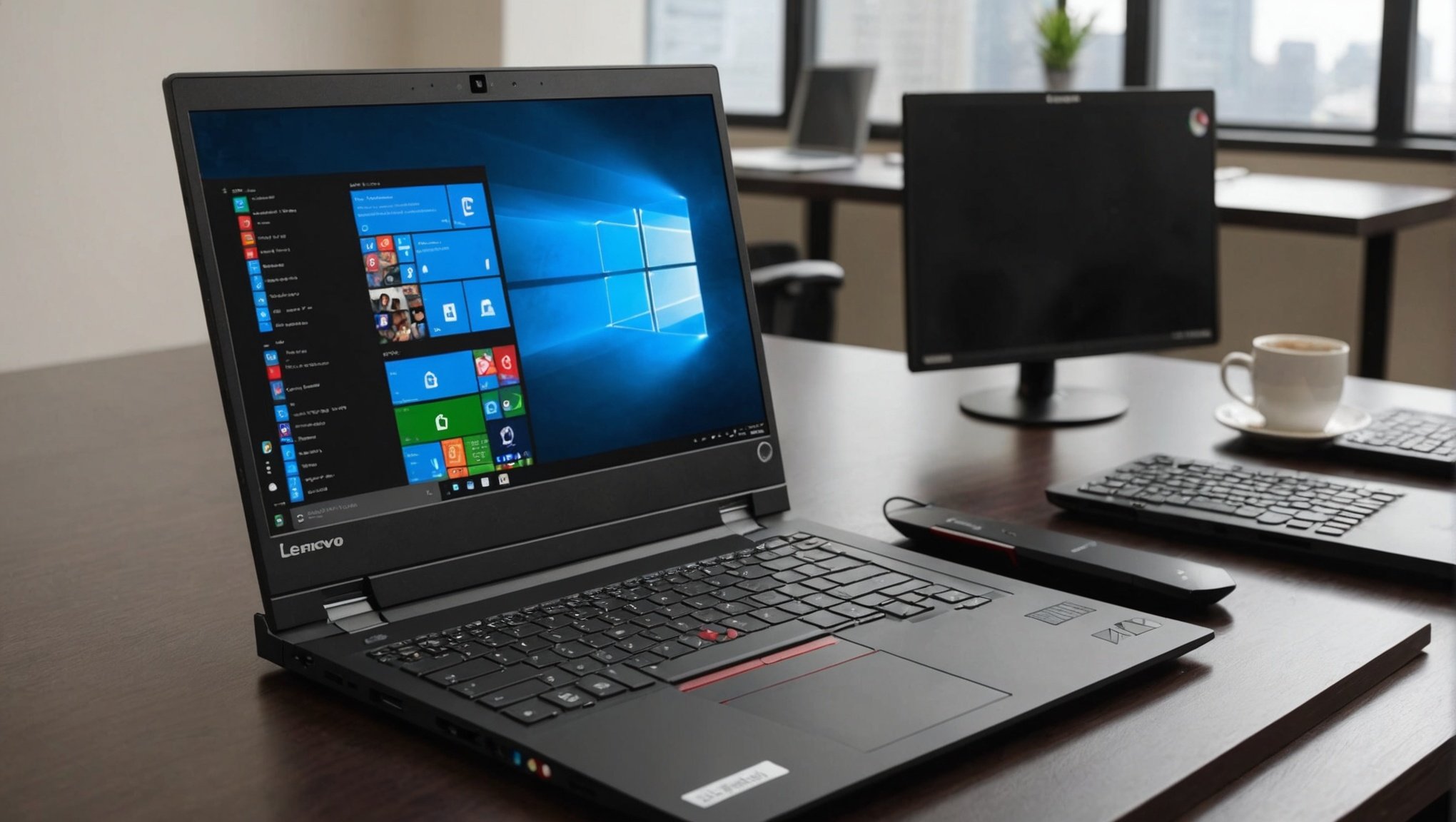Establishing a secure remote desktop connection is essential for protecting your Lenovo ThinkCentre M90n from potential threats. Unauthorized access can lead to data breaches and system vulnerabilities, making it imperative to implement effective security measures. This guide provides practical tips to enhance your remote access security, ensuring your sensitive information remains safe while you work remotely. Discover how to strengthen your setup with these proactive strategies, empowering you to execute your tasks confidently without compromising on security.
Importance of Securing Remote Desktop Connections
In today's interconnected world, Remote Desktop Security has become a critical aspect of cybersecurity. Remote desktop connections, while convenient, are susceptible to various vulnerabilities. These vulnerabilities can include unauthorized access, data breaches, and malware attacks. Ensuring robust security measures is essential to protect sensitive information and maintain system integrity.
Cybersecurity Best Practices play a vital role in safeguarding remote desktop connections. Implementing strong authentication methods, such as multi-factor authentication, can significantly reduce the risk of unauthorized access. Regularly updating software and applying security patches are crucial steps to mitigate vulnerabilities. Additionally, using encryption for data transmission ensures that sensitive information remains secure from interception.
The consequences of inadequate security measures can be severe. Unauthorized access to remote desktops can lead to data breaches, financial losses, and reputational damage. Moreover, compromised systems can become entry points for further cyberattacks, affecting an organization's entire network.
This might interest you : Mastering Secure and Efficient File Sharing: A Guide to Utilizing Synology DS720+ with Btrfs
For devices like the Lenovo ThinkCentre M90n, tailored security strategies are particularly important. Given its compact design and potential use in various environments, ensuring its remote desktop connections are secure is paramount. Implementing device-specific security configurations and adhering to best practices can help protect these systems from potential threats, ensuring both functionality and safety.
Configuring Software Settings for Security
To enhance the security of Remote Desktop Protocol (RDP), meticulous software configuration is crucial. Proper configuration ensures that the system is fortified against potential threats while maintaining optimal functionality.
Disabling Unused Features
A key step in securing RDP is to disable unused features. By doing so, the attack surface is minimized, reducing the risk of exploitation. Features that are not in use can become vulnerable entry points for attackers if left enabled. Thus, reviewing and disabling unnecessary features is a proactive security measure that can prevent unauthorized access.
Enabling Network Level Authentication
Network Level Authentication (NLA) adds an additional layer of security by requiring users to authenticate before establishing a full RDP connection. This means that attackers cannot exploit vulnerabilities in the RDP service itself without first passing through the authentication process. Enabling NLA is a recommended practice to ensure that only authenticated users can access the remote desktop, significantly enhancing security.
Regularly Updating Remote Desktop Software
Keeping remote desktop software up to date is essential for security. Regular updates address known vulnerabilities and enhance the system's ability to withstand emerging threats. Software vendors frequently release patches to fix security flaws, and applying these updates promptly helps maintain a secure remote desktop environment. Regular updates ensure that the system benefits from the latest security enhancements and bug fixes.
Firewall Configurations
Establishing robust firewall settings is an integral part of enhancing network security for remote desktop connections. Properly configured firewalls act as a barrier between your network and potential threats, ensuring that only legitimate traffic is allowed through.
Setting Up Windows Firewall for Remote Access
Configuring the Windows Firewall for remote access involves allowing specific ports and services necessary for remote desktop functionality. By default, Remote Desktop Protocol (RDP) uses port 3389. Ensuring that this port is open only to trusted IP addresses minimizes the risk of unauthorized access. It's also advisable to change the default port to a non-standard one to reduce exposure to automated attacks.
Allowing Specific Ports and Services
When setting up firewall rules, it is crucial to allow only the necessary ports and services. This principle of least privilege reduces the attack surface. For example, if certain applications require additional ports, they should be explicitly defined in the firewall settings. This approach ensures that only required traffic is permitted, enhancing overall security.
Monitoring Firewall Logs for Suspicious Activity
Regularly monitoring firewall logs is essential for identifying any suspicious activity. Logs provide insights into attempted connections, helping to detect potential threats early. By analyzing these logs, administrators can adjust firewall settings as needed to block malicious traffic, ensuring the remote desktop environment remains secure.
Utilizing VPN for Enhanced Security
In the realm of Remote Access Security, employing a Virtual Private Network (VPN) is a strategic measure to bolster protection. VPNs create a secure, encrypted connection over the internet, safeguarding data from potential threats and unauthorized access.
Benefits of Using a VPN
A Virtual Private Network offers numerous advantages for securing remote desktop connections. Primarily, it encrypts data, ensuring that sensitive information remains confidential during transmission. This encryption prevents interception by malicious actors. Additionally, VPNs mask the user's IP address, adding an extra layer of anonymity and reducing the risk of targeted attacks. By routing traffic through secure servers, VPNs also provide a safeguard against public Wi-Fi vulnerabilities, making remote work safer and more secure.
Selecting a Reliable VPN Provider
Choosing the right VPN provider is crucial for effective Remote Access Security. A reliable provider should offer strong encryption standards, a no-logs policy, and a wide range of server locations. It's important to assess the provider's reputation and user reviews to ensure consistent performance and security. Features like kill switches and DNS leak protection further enhance security by preventing data exposure in case of connection drops.
Configuring VPN on Lenovo ThinkCentre M90n
For devices like the Lenovo ThinkCentre M90n, configuring a Virtual Private Network involves installing VPN software and setting up connection parameters. This ensures that all remote desktop activities are conducted securely, maintaining data integrity and protecting against cyber threats.
Effective Password Management Practices
In the realm of Password Security, adopting robust practices is essential to safeguard remote desktop connections. Strong, unique passwords are the first line of defense against unauthorized access. Passwords should be complex, incorporating a mix of letters, numbers, and symbols, and should not be reused across different accounts.
Implementing Two-Factor Authentication
Authentication Methods like two-factor authentication (2FA) significantly enhance security. 2FA requires users to provide two forms of identification before accessing a system. This could be a combination of something they know (like a password) and something they have (such as a mobile device). By adding this extra layer, even if a password is compromised, unauthorized access remains unlikely.
Using Password Managers for Secure Storage
To manage and store passwords securely, using a password manager is highly recommended. Password managers generate and store complex passwords, ensuring they are both strong and unique. They also simplify the process of accessing different accounts by automatically filling in login credentials. This reduces the risk of password-related security breaches and ensures that users maintain high password security standards without the hassle of remembering multiple complex passwords.
Implementing Encryption Techniques
In the context of Secure Remote Access, Data Encryption is a cornerstone for ensuring the confidentiality and integrity of information. Encryption transforms readable data into a coded format, accessible only to those with the correct decryption key, thus safeguarding sensitive information from unauthorized access.
Enabling Encryption in Remote Desktop Protocol
To enhance security, enabling encryption in Remote Desktop Protocol (RDP) is essential. RDP offers built-in encryption settings that need to be configured to ensure all data transmitted is secure. By activating these settings, you protect against eavesdropping and data interception during remote sessions. This step is crucial for maintaining a secure communication channel between the client and the server.
Using Third-Party Encryption Tools
For added layers of security, employing third-party encryption tools can be beneficial. These tools offer advanced encryption algorithms and additional features that enhance data protection. They can be integrated with existing systems to provide comprehensive security solutions, ensuring that data remains encrypted throughout its lifecycle. This approach is particularly useful for organizations with specific compliance requirements or those handling highly sensitive information.
Best Practices for Data Transmission Security
Implementing best practices for data transmission security involves regularly updating encryption protocols to counteract emerging threats. It is also advisable to conduct periodic security audits to identify vulnerabilities. By adhering to these practices, organizations can maintain robust encryption standards, ensuring data remains secure during remote access sessions.











